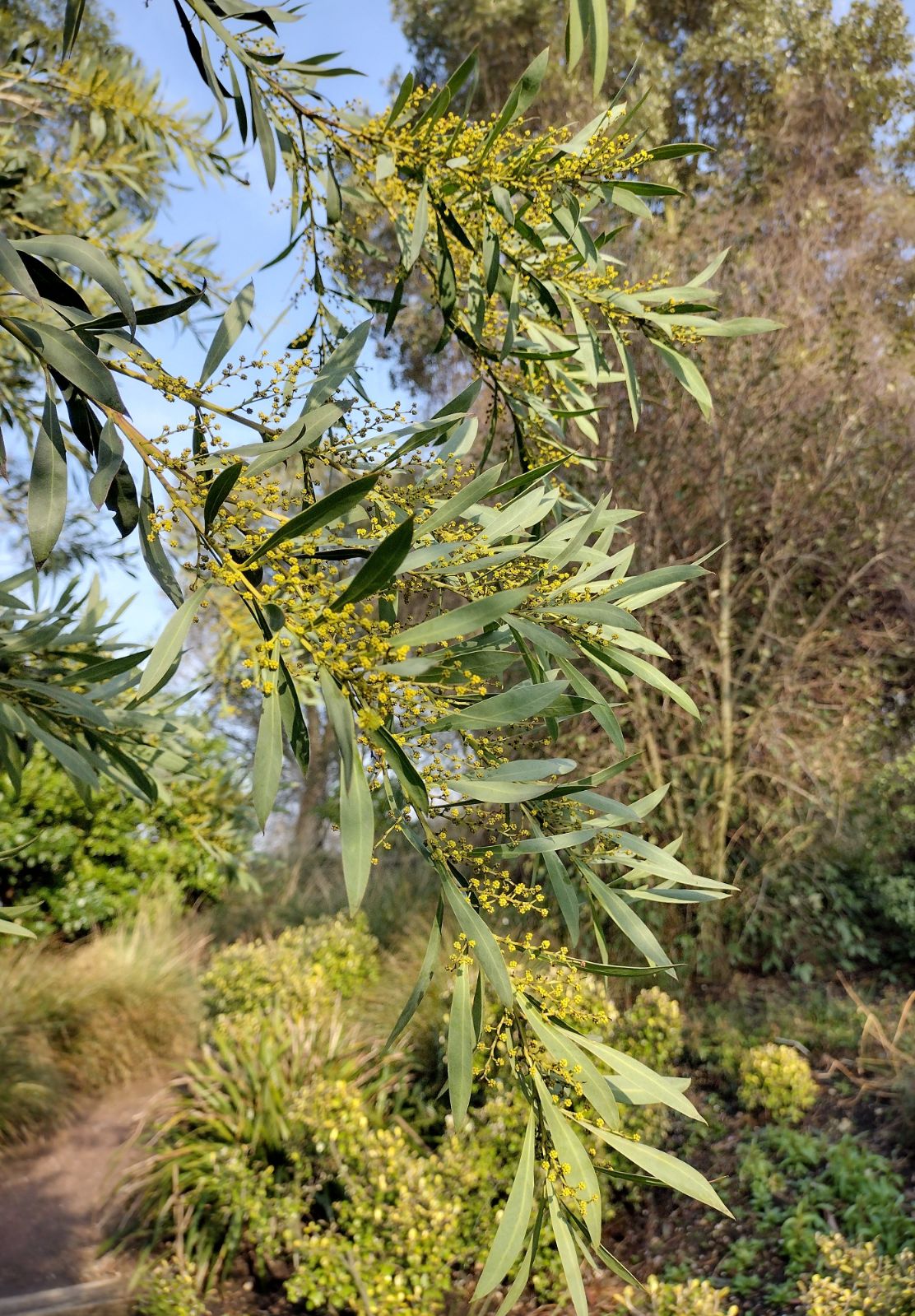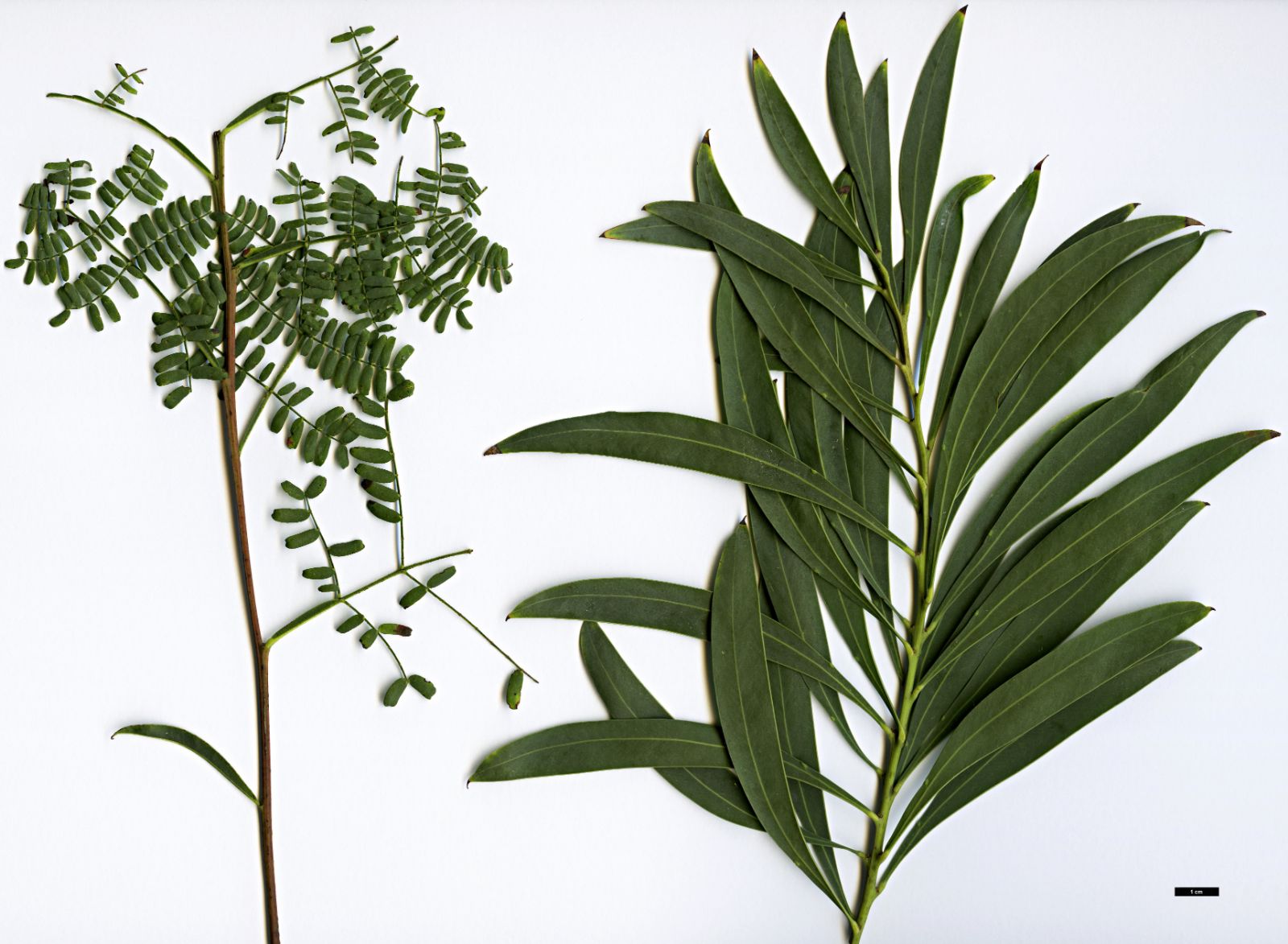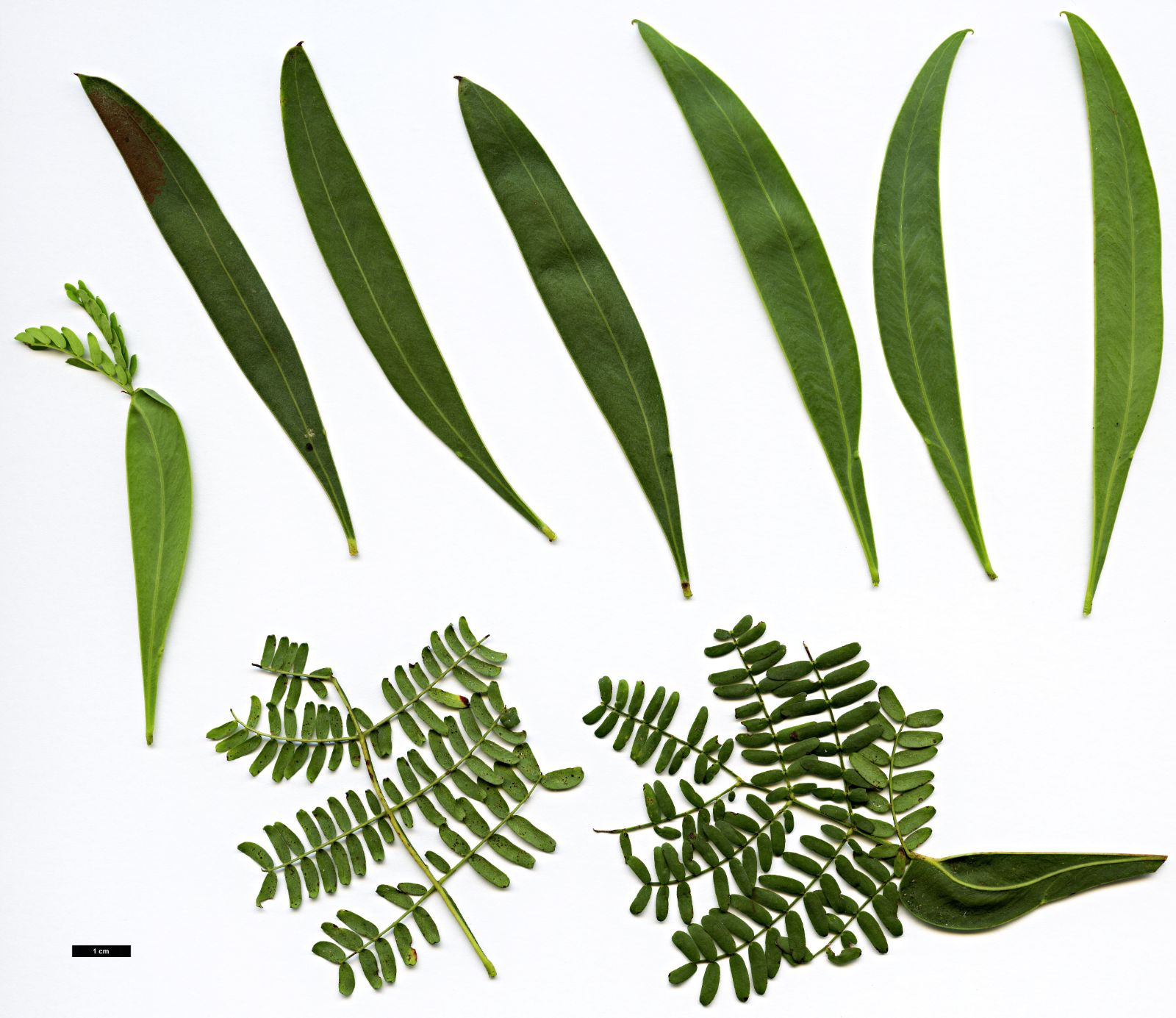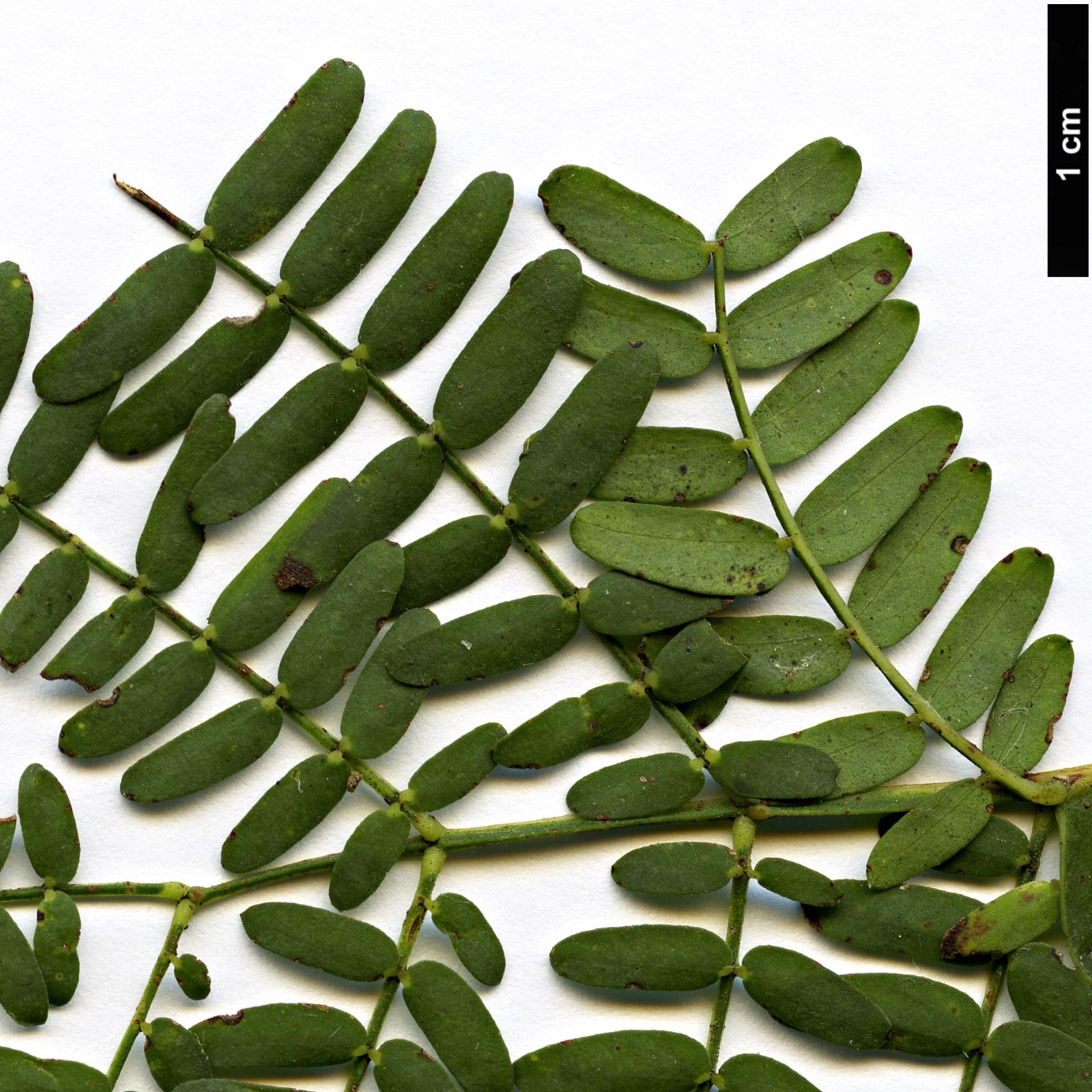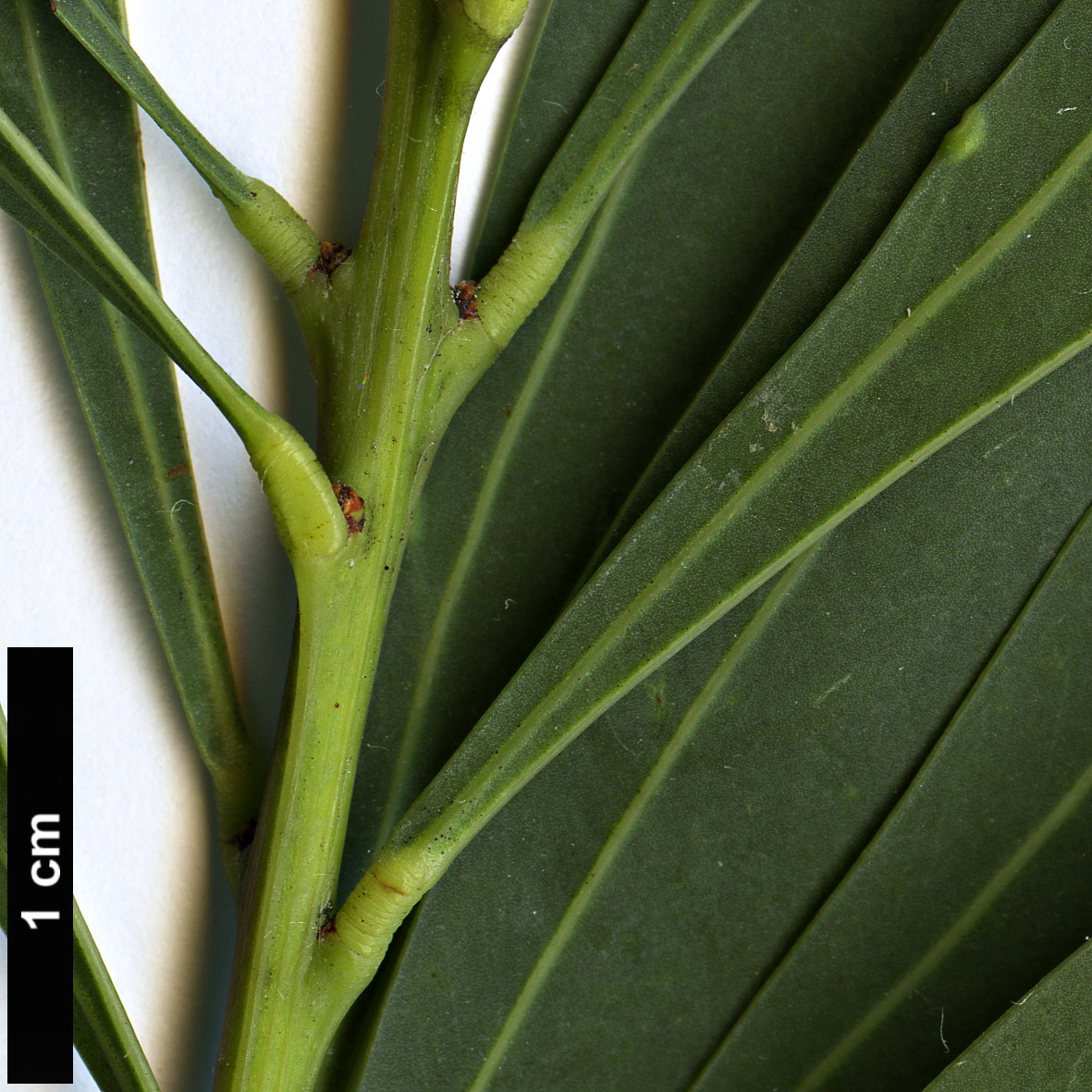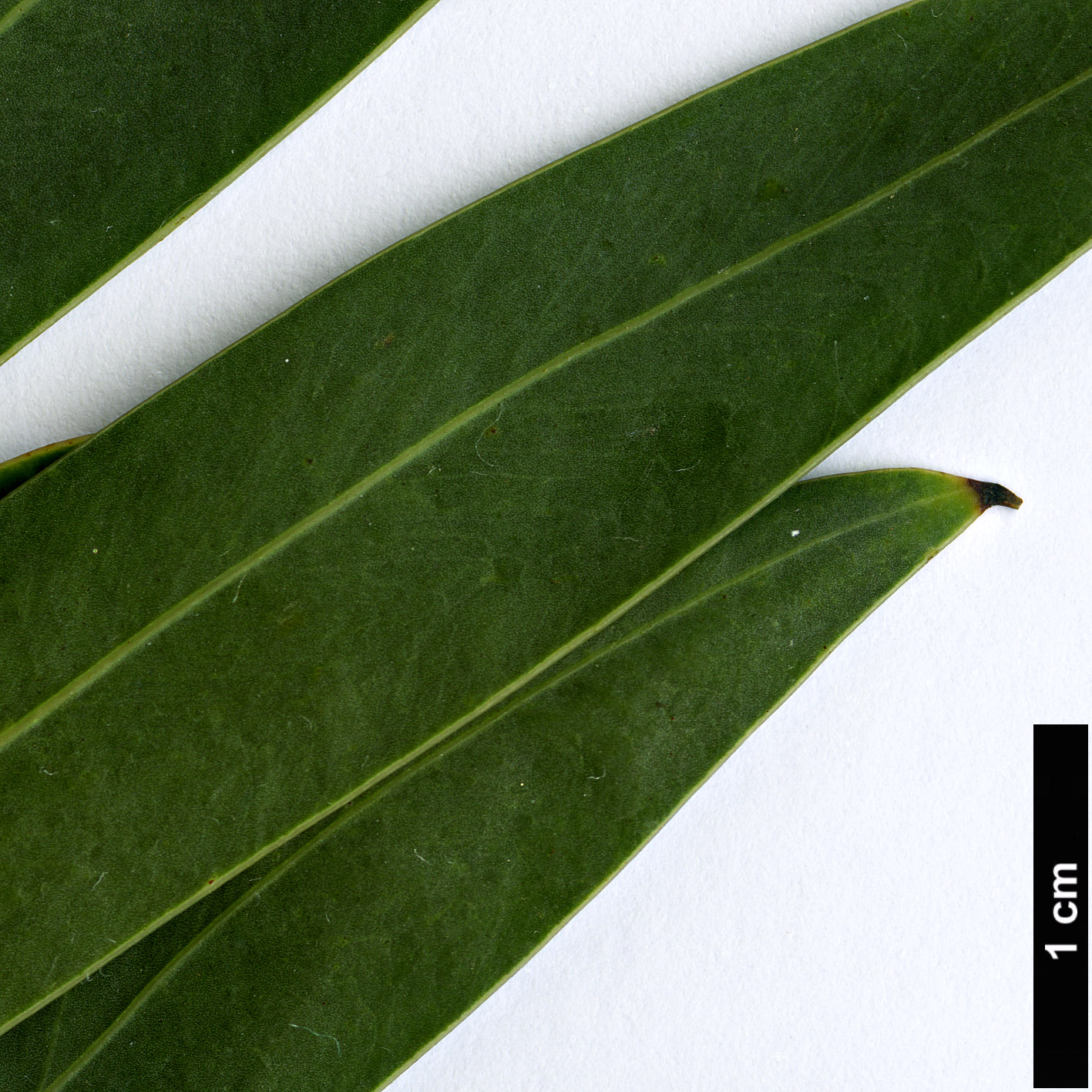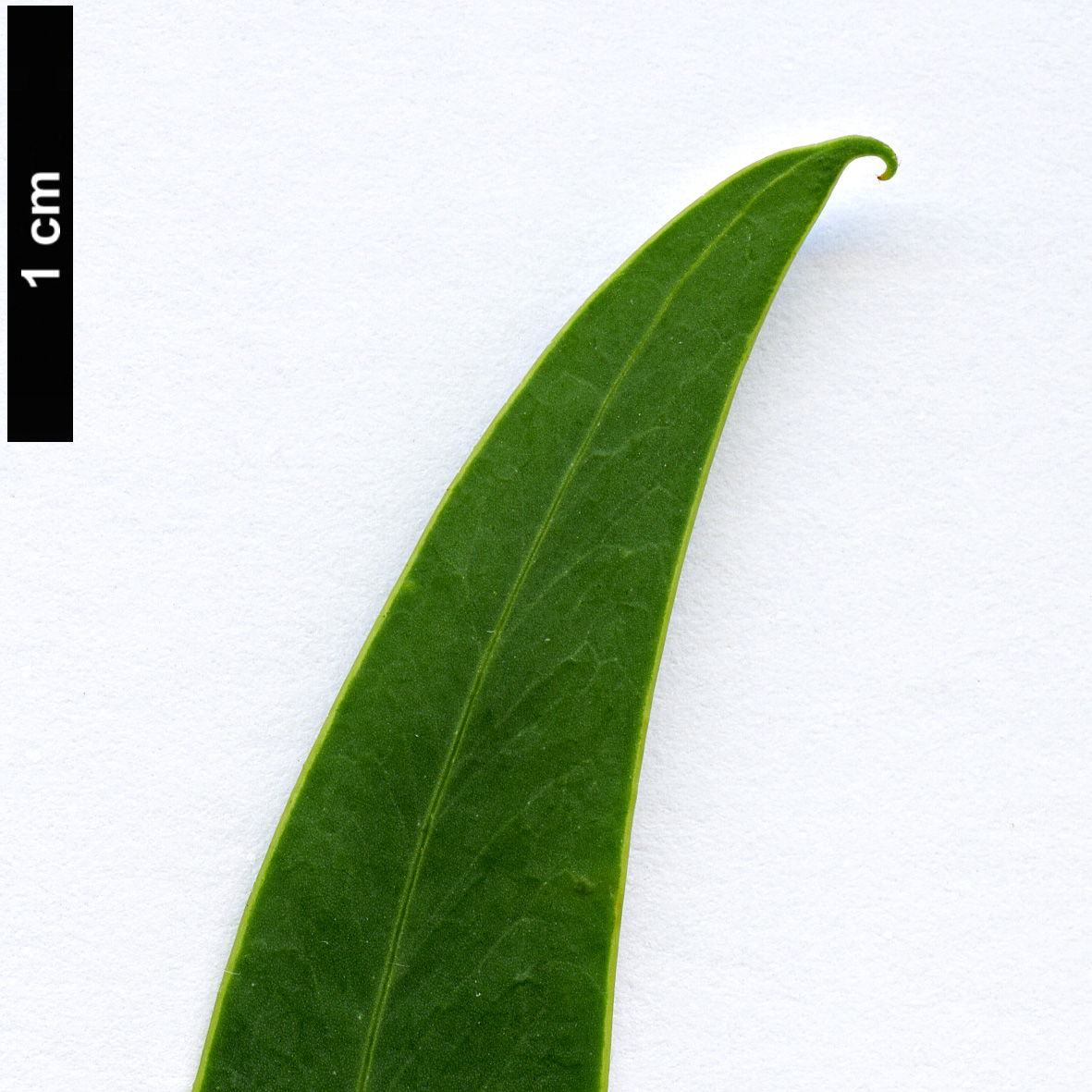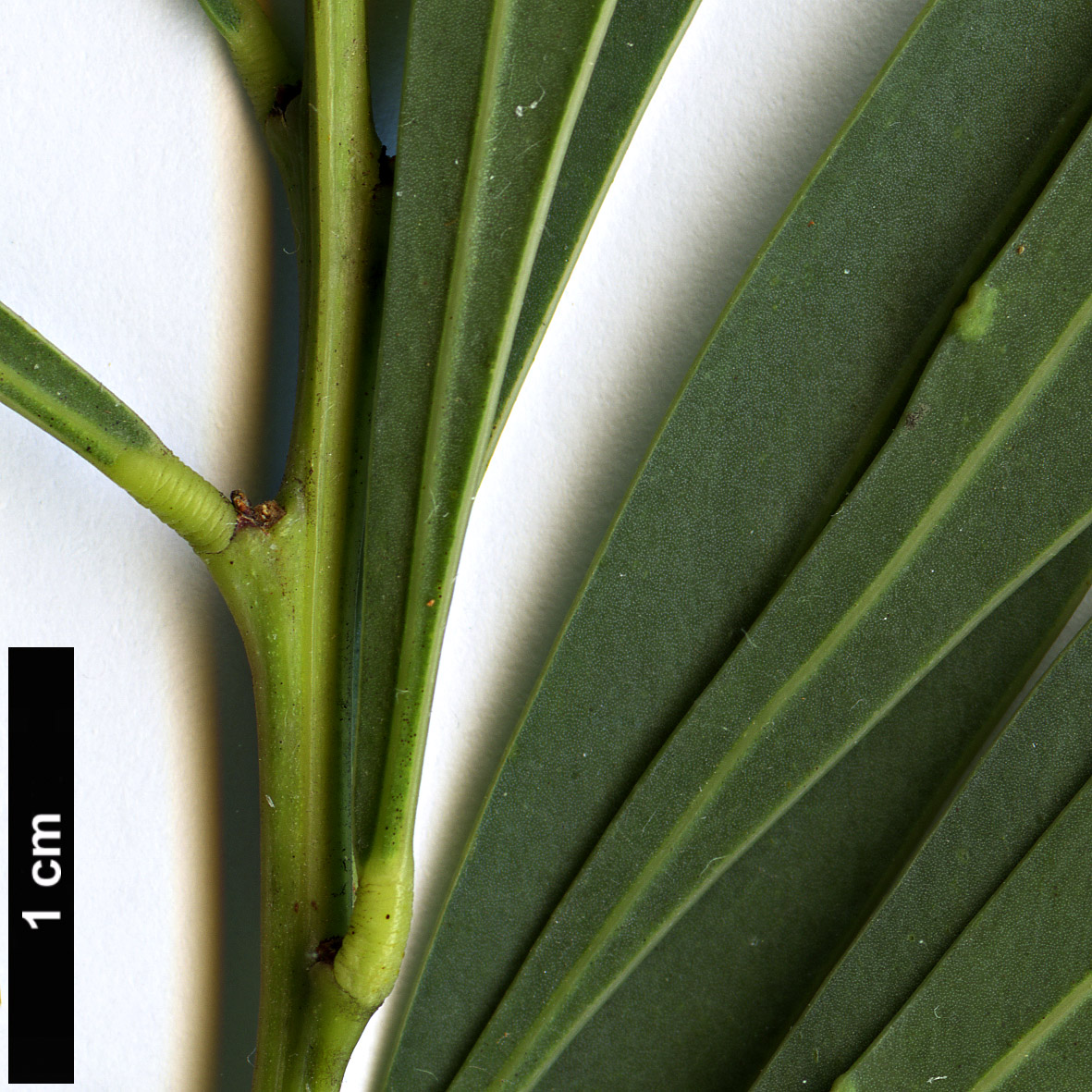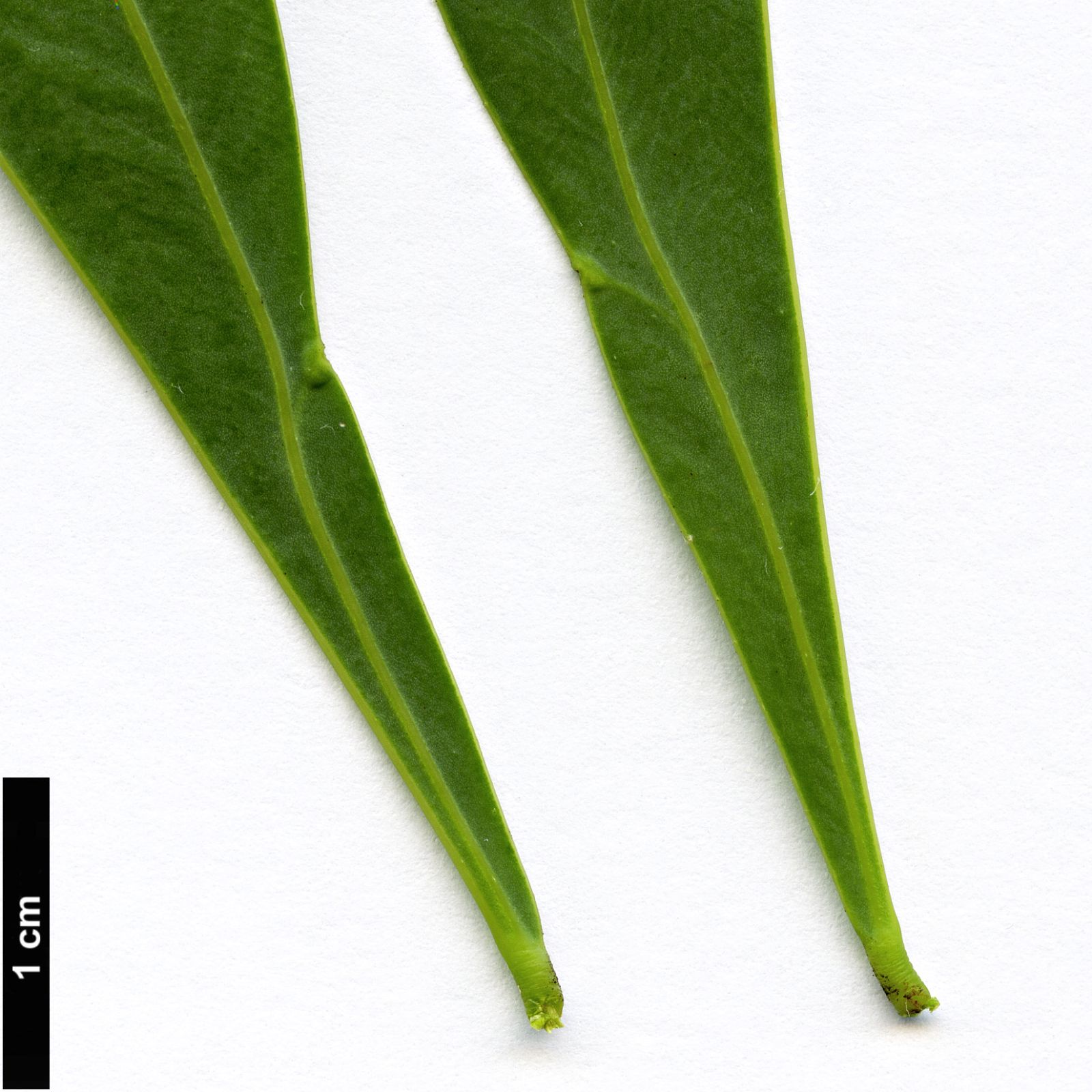Acacia rubida
Credits
Article from New Trees by John Grimshaw & Ross Bayton
Recommended citation
'Acacia rubida' from the website Trees and Shrubs Online (treesandshrubsonline.
Genus
Common Names
- Red-stem Wattle
Shrub or tree to 5 m. Branchlets red or reddish brown, glabrous. Leaves reduced to phyllodes, though juvenile bipinnate leaves often present; phyllodes narrowly elliptic to oblanceolate, falcate or straight, 5–20 × 5–25 cm, thin, green to glaucous, though drying to a reddish colour, one prominent longitudinal vein, margins entire or indented at the gland, apex acute or with a hooked tip. Inflorescence racemose and axillary, 2–7 cm long; heads globular with 10–20 light golden flowers. Flowers densely packed, 5-merous, petals absent, stamens numerous. Legume 5–12 × 0.5–0.8 cm, thin and papery or hard and flexible, somewhat glaucous. Seeds with aril. Flowering late spring. Chapman et al. 2001a, 2001b, Kodela & Harden 2001. Distribution AUSTRALIA: Australian Capital Territory, New South Wales, Queensland, Victoria. Habitat Typically near watercourses on a variety of soils including clay and sand, especially in upland areas. USDA Hardiness Zone 9. Conservation status Not evaluated. Taxonomic note Acacia rubida is a variable species. Though usually a small tree, it reaches 13 m or more in some parts of Victoria. A dwarf variant (reaching only 1.5 m) with small phyllodes (4–5 cm long) and spreading hairs on its branchlets occurs in parts of New South Wales (Chapman et al. 2001a, 2001b).
A comparatively small and slow-growing tree, Acacia rubida would seem to be an ideal choice for warm gardens where space is limited but an interesting and architectural plant is needed. Its long shoots carry the leaves more or less perpendicularly to the stem, and the bright yellow flowers appear amongst them. The stems are always reddish, but this coloration intensifies in winter and may also spread to the leaves. It is widely grown in southern Britain, at least, and in the western United States.

